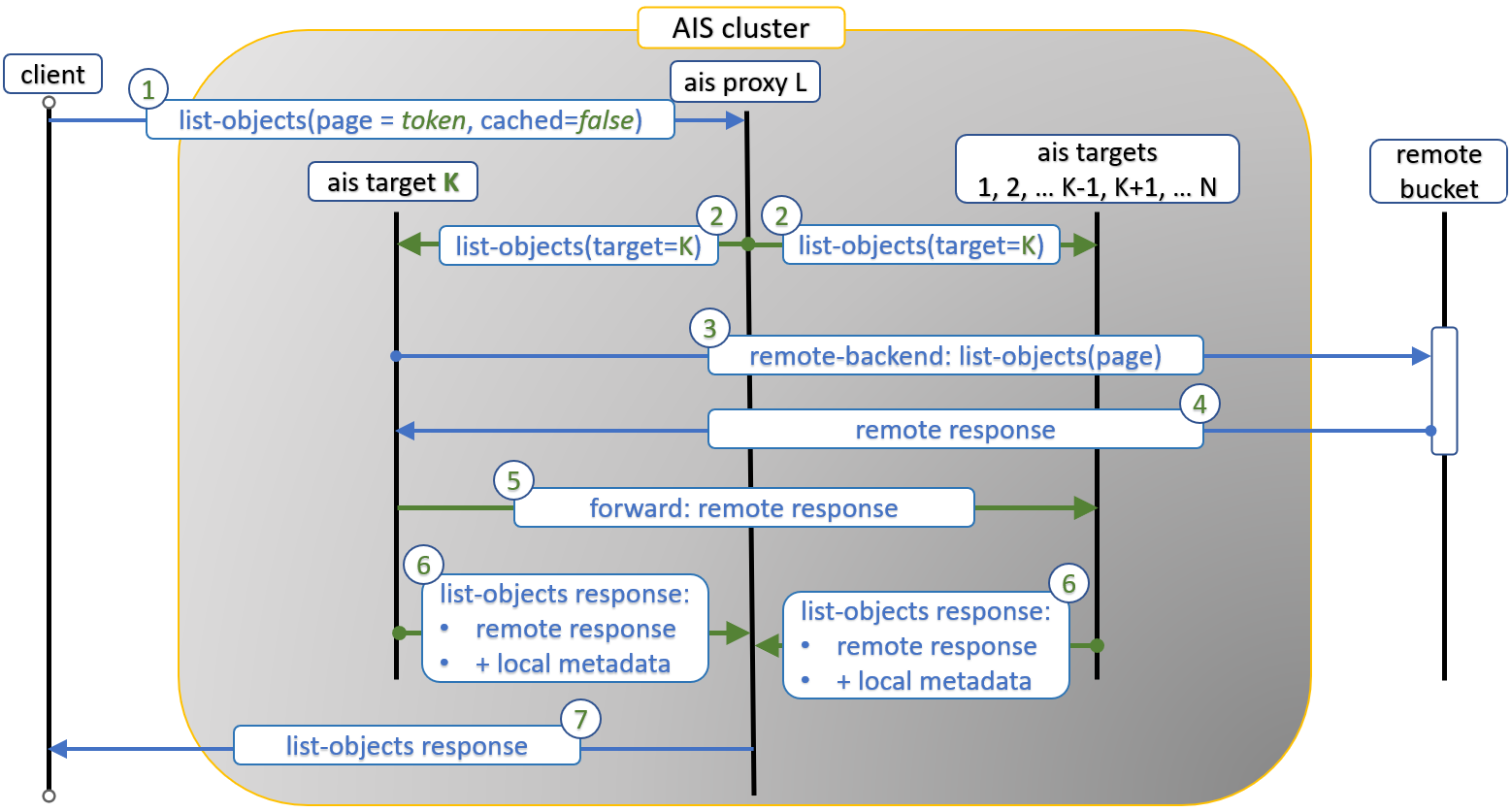AIStore 3.12 Release Notes
This AIStore release, version 3.12, has been in development for almost four months. It includes a number of significant changes that can be further detailed and grouped as follows:
Some of the more conceptual changes are briefly described below.
Remote AIS clusters
In AIS, remote buckets from different cloud (and non-cloud) providers, on the one hand, and from all inter-connected AIS clusters, on the other, form a global namespace of all buckets.
To connect one cluster to another, user calls attach-remote-ais(URL, alias) - an API where the URL is an access point (endpoint) provided by any gateway of the cluster in question, and the alias is human-readable alias.
Henceforth, the cluster remains known (addressable and accessible) by its given alias. In fact, aliases and unique identifiers can be used interchangeably.
Internally, however, we now solely rely on the cluster UUIDs.
Presence versus Existence
AIS completely hides the fact that a remote bucket may be only partially present in the cluster. Or not present at all.
Moreover, users can start reading, writing, listing, and otherwise operating on buckets that are totally unknown to AIS at the time of the first read, write, or list etc.
When a user references a new bucket, behind-the-scenes AIS looks it up, confirms the bucket’s existence and accessibility, and - if confirmed - on-the-fly updates its cluster-wide global metadata. The latter is called BMD and contains bucket definitions, associated management policies, and bucket properties.
To show BMD, run
ais show cluster bmd --json
There are cases, however, and scenarios when users may not want, or mean, to do any of the above - examples including:
- list or summarize only those buckets that are present in the cluster
- list only those objects that are present in a bucket that is present in the cluster
And so on.
To that end, AIS v3.12 introduces presence - an enumerated filter that can be used in API calls to override existing defaults (that hasn’t changed).
All API changes are further referenced in the changelog.
Listing remote objects
In 3.12, much of the functionality has been substantially revised. In particular, execution of any request to list objects in a remote bucket now further depends on:
- the presence specifier, and
- requested object properties
It is, in a sense, easier to satisfy the request for (name, size, and version) than, say,
list-objects(name, atime, custom)
One of the associated flows is illustrated by the following sequence diagram:

The sequence includes 7 (seven) steps, whereby in Step 1 client is asking either for the entire bucket contents or - if the bucket is very large - for the next page. Whatever it is, the client gets it back in Step 7.
The rest of it must be mostly self-explanatory, with maybe two minor comments:
- in Step 2, ais proxy selects a target (denoted as K) to call the remote backend
- Steps 2, 5, and 6 are executed over an internal network using long-lived TCP connections and streaming intra-cluster transport
S3 API
In addition to the native REST API, AIS also provides Amazon S3 with certain disclosed limitations. In v3.12, the most significant changes include:
- multipart upload
- ability to operate on all buckets from all providers (previously, only s3 buckets)
- configurable root ‘/’ access
If configured, AIS will handle S3 API calls at http(s)://aistore endpoint (with the default being http(s)://aistore/s3)
In addition, returned errors are now properly XML formatted, and more.